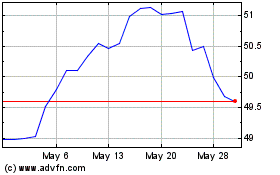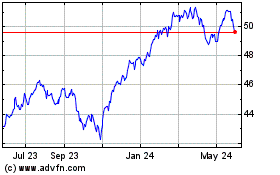Financial markets today are marked with uncertainties arising on
account of weak economic conditions around the globe. Thanks to the
slowdown in most emerging as well as developed markets, a
sustainable recovery seems to be a still distant phenomenon.
The present investment scenario demands continuous monitoring of
portfolios and positions. In order to do this, many investment
managers and investors are putting more of a focus on asset
allocation at this point of time.
Unlike range-bound, non-volatile market conditions, where a
traditional ‘buy and hold’ strategy would be the call of the day
for most investors for a decent upside, the present volatile
markets demands an investment strategy that reduces the overall
portfolio volatility (see Three Defensive ETFs for a Bear
Market).
While this can be done in a number of ways (like placing bets on
defensive sectors like healthcare and consumer staples), an ETF
approach is probably the most efficient and cost effective avenue
to achieve the aforementioned objective.
Investors could look into a number of low volatility products
such as the Russell 1000 Low Volatility ETF
(LVOL) or
PowerShares S&P 500 Low Volatility Portfolio
(SPLV) which seeks to
minimize the overall volatility by holding stocks that show little
variations in price and returns.
The current market turbulences might be a good buying
opportunity for these low volatility funds as these products would
go a long way in reducing overall portfolio beta for an investor
(read Four Easy Ways to Play Beta and Volatility with ETFs).
LVOL and SPLV
are up 7.2% and 7.8%, respectively, on a year-to-date basis. From a
risk point of view, LVOL has an annualized volatility of just
20.33% and a beta (against the S&P 500) value of 0.76, whereas
the annualized volatility for SPLV stands at 16.05% and a beta
value of 0.65. Therefore we see that reducing overall volatility
might go a long way in maximizing total returns in times of
volatile markets.
Yet while these low volatility products are certainly one way to
tackle the market, some who are willing to take on a little more
risk but still want extreme diversification, could look to equal
weight ETFs instead. These funds break the link between market cap
and stock weight in a fund, and could be overlooked ways to play
the market at this time, beyond the low volatility space (see more
in the Zacks ETF Center).
Weighting Methodologies in Focus
While some investors may not know it, a significant factor which
determines the performance of a particular fund is the index
weighting methodology. The conventional “float adjusted market
capitalization weighting methodology” seems to be extremely popular
despite some of the flaws in the technique.
After all, market cap weighted funds tend to have a significant
bias to large cap stocks and indeed, a few choice mega caps in
particular. Furthermore, these funds, by nature, do not offer much
in terms of small and mid cap exposure suggesting other ways could
be the way to play the market.
This could be especially true in the case of Equal Weight ETFs,
as these funds not only go a long way in reducing overall risk, but
also provides significant upside potential, mainly thanks to their
equal allocation towards the entire spectrum of market
capitalization levels (see Alternative ETF Weighting Methodologies
101)..
The best thing about this approach is that performance is not
heavily dependent on the returns in a particular stock or group of
securities. Furthermore, with quarterly rebalancing,
equally-weighted funds tend to take cash in on the overvalued
segments and reinvest in the underperforming ones, potentially
allowing for outperformance if trends reverse.
However, investors should note that there are some downsides to
the structure. If trends in sectors continue over multiple quarters
the equal-weight funds could be laggards, while a similar situation
could arise in declining and risk off markets.
Yet for investors looking for a new way to play this uncertain
market, and one that can still gain if events turn around in the
global economy, these equal weight ETFs could be interesting picks.
For these investors, we have highlighted two of the more popular,
and well-known, options in the space for those of you considering a
first step into the equal weight ETF world:
Guggenheim S&P 500 Equal Weight ETF
(RSP)
Launched in April of 2003, RSP places its bets equally on the
stocks of the S&P 500 index without regard to their market
capitalization or any other fundamental/technical factor. It tracks
the S&P Equal Weight Index putting roughly 0.2% in each
stock.
Although the index is itself a subset of the S&P 500 index
which tracks the performance of 500 of the largest companies in the
U.S equity markets, the equal weighting methodology causes the
total returns of RSP to substantially vary from the actual S&P
500 total returns (read Five Best Performing ETFs (So Far) in
2012).
The ETF charges 40 basis points in fees and expenses and has
managed to amass $2.74 billion in total assets. This suggests that
it is a relatively popular fund and that bid ask spreads should be
extremely tight overall.
Investors should note that the fund will likely outperform in
bull markets, thanks to small caps surging in times of ‘risk on’
trading. However, the opposite is also true in bear markets;
products like SPY will outperform their equal-weight counterparts
in times of declining prices.
RSP has fetched 11.3% in terms of returns on a year-to-date
basis, slightly lower than SPY over the same time frame.
Furthermore, the dividend is somewhat light due to higher small cap
holdings—coming in at 1.49%-- while the average volume is at
roughly 610,000 shares on an average day.
Fortunately, long term charts do favor RSP, as the fund has
crushed SPY in the past five year period, adding about 6.3%
compared to a 1.2% loss for the market cap weighted version
ALPS Equal Sector Weight ETF
(EQL)
The ETF places its bets equally across the nine broad sectors
that comprise the S&P 500 index. This implies that EQL has
roughly 11.11% exposure towards each sector. This strategy goes a
long way in reducing the overall risk of the ETF, since equal
allocations are given to volatile sectors like Technology and
Financials and defensive sectors like Consumer Staples or
Healthcare.
From its basic structure, EQL qualifies to be an ETF of ETFs, as
it gains exposure across all sectors by investing equally in the
nine select sector ETFs of the SPDR fund family managed by State
Street Global Advisors.
The strategy has produced an ETF that has $72.14 million in
total assets and decent, but not great volume on a daily basis. The
ETF was launched in July 2009 and tracks the Bank of America
Securities-Merrill Lynch Equal Sector Weight Index.
Investors should note that the product is relatively pricey as
it comes in with a 52 basis point expense ratio. This is largely
due to the fund having two types of fees; the general management
fee and then the carry-over ETF fees from the underlying holdings
(read Guide to the 25 Cheapest ETFs). Despite this fact, the ETF
could make for a great choice for investors with a long term view
willing to place their bets on overall U.S equity performance.
The ETF has returned 10.4% so far this year and has an average
daily volume of 13,840 shares. This puts it below its counterparts,
but the fund could have lower volatility levels than these as well.
After all, this fund puts far more in utilities and much less in
tech than SPY, suggesting a lower beta for this product
overall.
Want the latest recommendations from Zacks Investment Research?
Today, you can download 7 Best Stocks for the Next 30
Days. Click to get this free report >>
ALPS-EQL SEC WT (EQL): ETF Research Reports
RUSL-1K LO VOLA (LVOL): ETF Research Reports
GUGG-SP5 EQ ETF (RSP): ETF Research Reports
POWERSH-SP5 LVP (SPLV): ETF Research Reports
SPDR-SP 500 TR (SPY): ETF Research Reports
To read this article on Zacks.com click here.
Zacks Investment Research
Want the latest recommendations from Zacks Investment Research?
Today, you can download 7 Best Stocks for the Next 30 Days. Click
to get this free report
American Century Low Vol... (AMEX:LVOL)
Historical Stock Chart
From Apr 2024 to May 2024

American Century Low Vol... (AMEX:LVOL)
Historical Stock Chart
From May 2023 to May 2024
